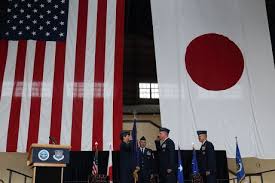
Russia, China Slam US ‘Typhon’ Missile Deployment in Japan

 :
| Updated On: 30-Aug-2025 @ 11:45 am
:
| Updated On: 30-Aug-2025 @ 11:45 amSHARE
Russia and China have issued strong, separate warnings to Japan over its decision to allow the United States to deploy the “Typhon” intermediate-range missile system during upcoming joint military exercises in Japan scheduled for next month. Both Moscow and Beijing view the move as a destabilising development that threatens regional peace and security.
On Friday, Russian Foreign Ministry spokeswoman Maria Zakharova described the deployment as “another destabilising step” in Washington’s broader strategy to expand the potential of ground-based short and intermediate-range missile systems. She stressed that placing Typhon missiles in areas close to Russia constitutes a direct strategic threat. Her remarks, published by Russia’s state-run TASS news agency, underscored Moscow’s growing concerns over Japan’s shifting security posture.
Zakharova further noted that Moscow has taken serious note of Japan’s moves toward what she termed “accelerated militarisation” and its deepening security cooperation with the United States. She warned that unless Japan reverses its decision on the Typhon deployment, Russia would be forced to take “appropriate military-technical measures” in response. Such steps, she indicated, would be necessary to counter the perceived threat posed by the US-Japan military collaboration. Zakharova also held Japan directly accountable for the consequences, stating that responsibility for any further deterioration of regional stability would rest with Tokyo.
China echoed similar concerns. Foreign Ministry spokesperson Guo Jiakun emphasized that both the United States and Japan should be working toward regional peace and stability rather than undermining it through missile deployments, even if temporary. Guo reiterated Beijing’s long-standing opposition to the US stationing of the Typhon Mid-Range Capability missile system in Asian countries, according to a statement carried by China’s state-run Xinhua news agency.
Guo urged Japan to reflect on its history of wartime aggression, adhere to a peaceful development path, and exercise caution in the military and security domains. He warned that Japan risks losing further trust among its Asian neighbors and the broader international community if it continues to act in ways that appear militarily provocative. He also pressed Washington to “draw lessons from history” and invest its resources in constructive, peace-oriented policies rather than aggressive militarisation.
The Reuters news agency reported that the Typhon missile system is part of Washington’s broader strategy to build a diverse arsenal of anti-ship and strike capabilities across Asia as a counterbalance to China’s growing military presence. The system was first deployed in the Philippines during training exercises in 2024, which at that time had already provoked strong criticism from Beijing. Since then, the Philippines has announced its intention to purchase the land-based system, which currently has a range of about 480 kilometers (300 miles), with a longer-range version under development.
In Japan, the Typhon missiles are set to be stationed at the US Marine Corps Air Station in Iwakuni city, located on Honshu island, approximately 890 kilometers west of Tokyo. A spokesperson for Japan’s Ground Self-Defense Force confirmed the deployment but did not clarify whether the missiles would be actively fired during the upcoming “Resolute Dragon” exercises, scheduled from September 11 to 25. These exercises are part of ongoing joint drills aimed at enhancing coordination between US and Japanese forces.
In summary, the planned Typhon deployment has drawn sharp criticism from both Russia and China, who view it as a destabilising escalation that undermines regional peace. Russia has threatened military countermeasures, while China has called on both Japan and the US to act responsibly and pursue peaceful alternatives. The issue reflects broader tensions in the Asia-Pacific, where the US is expanding its missile capabilities to deter China, raising alarms in both Moscow and Beijing.